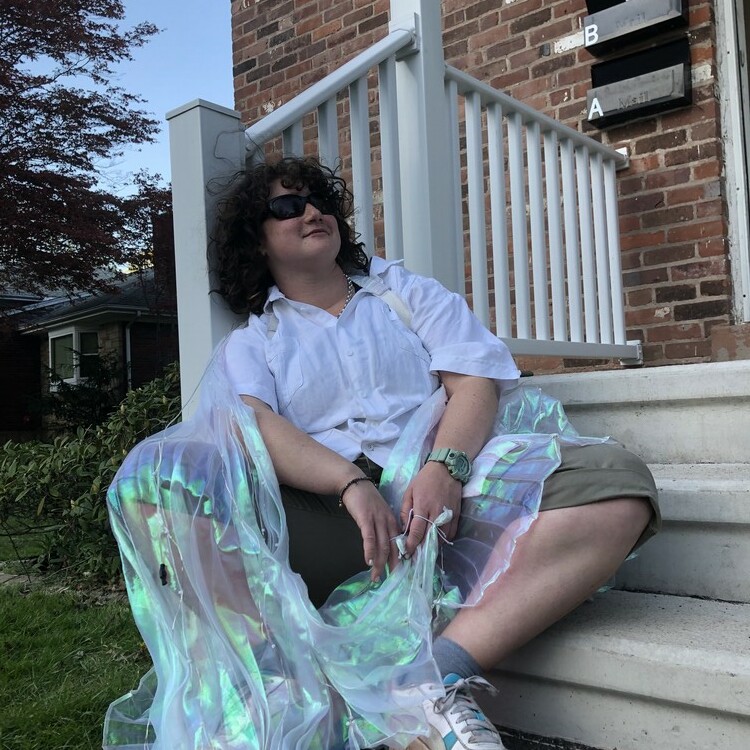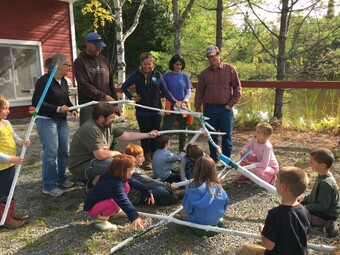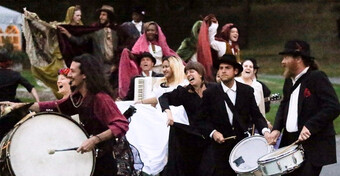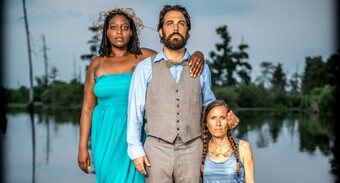We Are All Kin to the Cove is a site-specific, devised piece that explores the relationships between water and humans, produced by the Remote Theater Project (RTP). The performance was generated through a two-and-a-half-week workshop led by Remote Theater Project that investigated the ensemble’s relationship to each other, to water, to the cove at 31st Ave/Vernon Blvd, and to the community of around the cove in the New York City neighborhood of Astoria, Queens. The project is inspired by and in relation to 36.5/A Durational Performance with the Sea by Sarah Cameron Sunde, and both take place at the cove at 31st Ave and Vernon Boulevard. The performance is one in a line of several projects leading up to Sunde’s performance on 14 September, which involved her standing in the water for a full tidal cycle (around twelve or thirteen hours) with no food or breaks. She has performed this in nine locations around the world, and this performance was her final in the series, with satellite performances happening at all the previous locations. Sunde developed 36.5 as a reaction to Hurricane Sandy, a climate disaster that made Sunde acutely aware of water and humankind’s desperate need to act in symbiosis with it. Once the threat of COVID postponed 36.5’s performance in 2020, Sunde, along with Chris Bisram and other community members, started a community group called Kin to Cove where local artists and community members joined together to hang out, clean the cove, and create. This group blossomed into several artistic projects, including We Are All Kin to the Cove.
Although Sunde spoke at the performance of We Are All Kin to the Cove, the project was led and facilitated by college students Chris Bisram and Nina Jakobson and produced by Alex Aron of Remote Theater Project (RTP). Bisram is a lifelong resident of Astoria and met Sunde, his friend and mentor, in 2020 while she was looking for a performer for 36.5. When Sunde approached Aron with an opportunity to assist with some of the community outreach, she was intrigued. As producing artistic director of RTP, which aims to promote cross-cultural dialogue through performance with a global perspective, Aron had been a longstanding admirer of 36.5. After meeting Bisram, Aron was drawn in by their artistic perspective. She brought in Jakobson, one of RTP’s summer interns, as a collaborator. Sarah Shapiro and I, also RTP summer interns, joined the process as a stagehand and production assistant, respectively. Bisram and Jakobson formed the rest of the group by postering the neighborhood, using social media, and recruiting at Long Island City High School and a local community organization called ZONE 126. The full performing ensemble of We Are All Kin to the Cove included Bisram and Jakobson in addition to Desiree Genao, Nicole Ulloa, Megan Masciana, Eryn Peritz, and Alex Aron. Ulloa and Peritz are college students, and Genao, the youngest of the team, will soon be 16. Masciana, a graphic designer who moved to Queens last year, was the final member of the team to join. One day during rehearsal, Masciana was sitting on the beach and inquired what the collective was doing. They invited her to join.
“It’s like a collage, except it is in real life, not on paper. A collection of this group and the community’s thoughts and experiences with the cove.”









Comments
The article is just the start of the conversation—we want to know what you think about this subject, too! HowlRound is a space for knowledge-sharing, and we welcome spirited, thoughtful, and on-topic dialogue. Find our full comments policy here